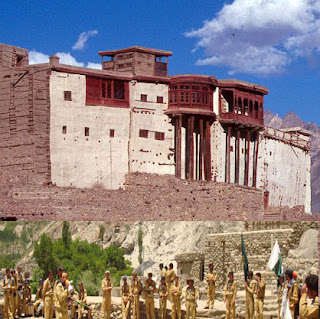THE LEGEND OF HUZA
NAZIR SABIR
Nazir Sabir Urdu: نذیر صابر is a Pakistani mountaineer. He was born in Ramanji a small hamlet in Chiporsun, upper Hunza known as Gojal. He is the only Pakistani to have climbed Mount Everest and four of the five 8000m peaks in Pakistan, including the world’s second highest mountain K2 also known as Chogori in 1981, Gasherbrum II 8035m and Broad Peak 8050m in 1982, Gasherbrum I (Hidden Peak) 8068m in 1992 and he became the first from Pakistan to have climbed Everest on May 17, 2000 [1] as a team member on the Mountain Madness Everest Expedition led by Christine Boskoff from USA that also included the Everest famed Peter Habeler of Austria and eight Canadians.
Climbing carrier

Nazir started off his climbing career with a Japanese expedition to the 7284m Passu Peak in Hunza in 1974. In 1975 he was part of a German Expedition as a trainee that attempted Nanga Parbat (8125m) and only went to 6700m up the S W Ridge. On July 17, 1976 he made the first ascent of 6660m virgin Paiyu followed by Col. Manzoor Hussain and Major Bashir with the first Pakistani expedition organized by the Alpine Club of Pakistan.
In 1977 Nazir Sabir joined the largest Japan/Pakistan joint expedition to K2, attempting the traditional South East Abruzzi Ridge. It was a huge expedition, using bottled Oxygen; this team had an army of 1500 porters and 52 members. However Nazir Sabir’s first assault team including four Japanese had to turn back due to snow storms from 8280m. Another attempt with the same team had to be abandoned again from 8150m when they had to come down searching for two missing colleagues who were found alive below C4 the next day. However they put seven members of the team on the summit making the second ascent of K2. Till then only two mountaineers of the 1954 successful Italian expedition had stepped on the K2 Summit.
Nazir Sabir was invited to climb K2 in 1981 by his friends by the Waseda University Expedition attempting the West and South West ridges rather than the usual Abruzzi ridge. The Duke of Abruzzi had, in 1909, surveyed K2 from all its sides. He felt that K2 could only be assailed from the South East Ridge, which was to be named Abruzzi Ridge.
In 1978 the famous British climber Sir Chris Bonington made his first attempt on this new route up the West Ridge. Nick Estcourt, a member of this team, was swept to his death by a slab avalanche on the way to Camp 2 while Doug Scott barely survived the avalanche.It involves a difficult grade on a mixed ground of snow and rock at higher elevations. Doug Scott who was a member of the 1978 expedition led another team strong teams of five top British climbers but the gave up at 7300 due to bad weather.
Nazir, followed by Eiho Otani, reached the summit of K2 on 7 August 1981. Nazir and his team from the Waseda University created history by successfully climbing K2's West/South West Ridge for the first time. A documentary film of the climb, "50 Day Struggle" shown all over Japan, made Nazir Sabir a household name there.
In 1982, Nazir Sabir along with Sher Khan and the famous Italian mountaineer Reinhold Messner climbed Gasherbrum II 8035m and Broad Peak 8047m. Both Gasherbrum II and Broad Peak were done in Alpine style in a period of just one week, the fastest ascent of two 8000m peaks at the time!
Everest Expeditions

Nazir Sabir first attempted Everest leading the first Pakistan Everest Expedition of ten plus a film team in 1997. Nazir had to abandon first summit attempt with his five colleagues due to strong blizzards blowing across the summit ridge from 8630m and again had to return from around 8500m on their two other summit attempts due to strong winds.
Nazir went back to Everest from Nepal side and on 17 May 2000, climbing in the company of his Nepalese Sherpa colleagues and a Canadian on a full moon night to avoid high winds he stepped on the highest summit at 0730 hours becoming the first from Pakistan to get to the roof of the world. After hoisting Pakistan flag atop Everest he paid tributes to his many dead friends on the higher ground of Everest including Scott Fischer, Rob Hall, Ube Akira, Kobayashi, Yasuo Kato, Futagami and many more who gave their lives in love of these eternal higher heavens. While waiting for Ben Webster of Canada and two other Sherpas he went on enjoying the most splendid moments of his life with his two Sherpa colleagues taking video shots of Ben and others climbing the last part of the summit ridge and the magical surroundings against the backdrop of the much blessed early morning sun approaching from behind 8462m Makalu, 5th highest mountain in the world.
He spoke to the base camp and sent the message of humbleness and happiness back home and to his closest friends who were watching his progress and counting steps up the last part of the mountain as he climbed through the clear night winds. He received hundreds of messages from across the country and the globe including that of Benazir Bhutto who was second to send in her congratulations from London where she lived at the time.













